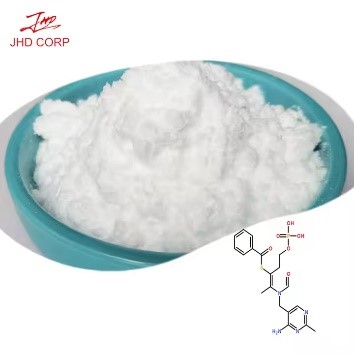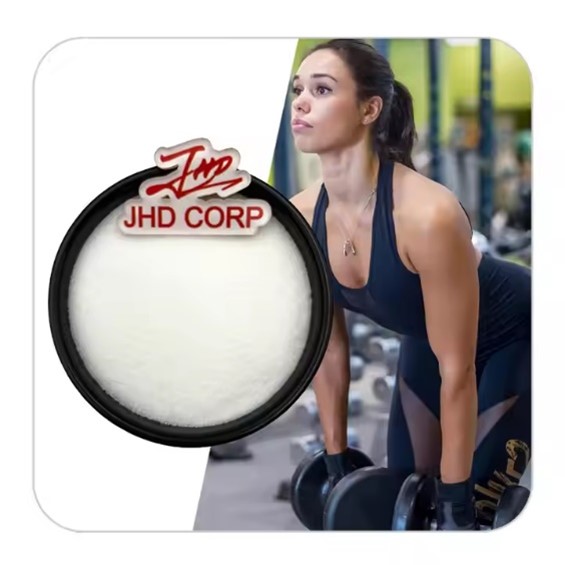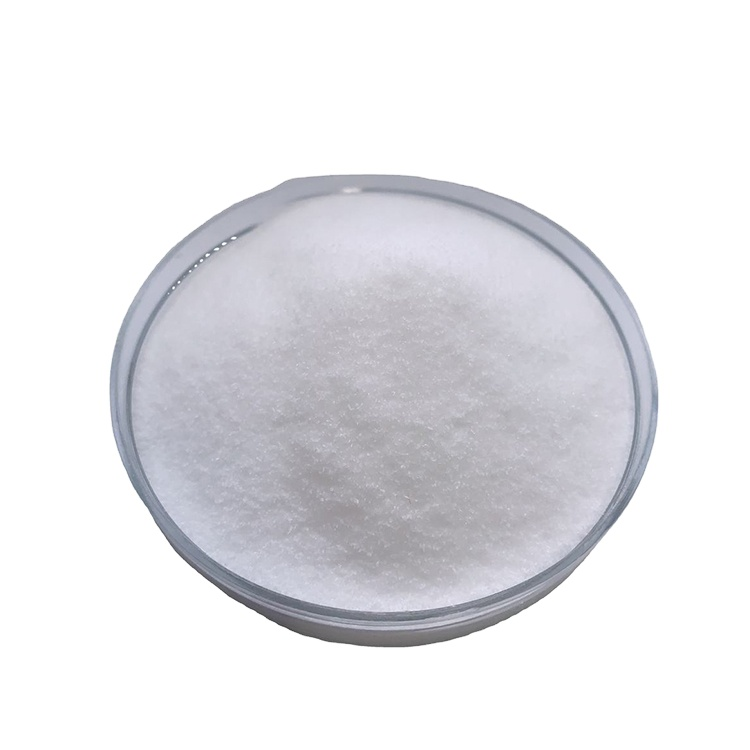Welcome to JHD Nutrasource!
Shop
Showing 10–18 of 106 results
-

Benfotiamine
Benfotiamine is a fat soluble derivative of vitamin B1. In addition to its physical and chemical properties, it is different from water-soluble vitamin B1 in structure. It has an open thiazole ring and forms a physiological active vitamin B1 through closed-loop action in vivo.
-

Beta Alanine Powder
Beta Alanine powder is a non-essential amino acid and the only naturally occurring beta-amino acid, functioning as a component of carnosine. Supplementing with it increases muscle carnosine concentration to enhance buffering capacity, neutralize hydrogen ions from lactic acid, and delay exercise-induced fatigue.
-

Bis(glycinato)manganese
Bis(glycinato)manganese, also known as manganese glycinate chelate, is a coordination compound formed by the bonding of manganese ions with two glycine molecules. It typically presents as a light pink to brownish powder, which showcases good solubility in water. The chelation process significantly enhances the stability of manganese within the compound. This not only improves the bioavailability of manganese, making it more readily absorbed by the body, but also reduces the potential for causing gastrointestinal irritation, which is often associated with inorganic forms of manganese. Structurally, the glycine molecules act as ligands, surrounding the manganese ion and creating a complex that is both chemically stable and biologically accessible.
-

Boron Citrate
Boron Citrate, a chelated compound of boron and citric acid, presents as a white or off-white powder. Its chelated structure offers enhanced water solubility and bioavailability compared to inorganic boron compounds, enabling easier gastrointestinal absorption with reduced irritation. It also maintains stability in solutions, facilitating formulation development.
-

Calcium Ascorbate
Calcium Ascorbate is a white to off-white crystalline powder, the calcium salt of ascorbic acid, formed by neutralizing ascorbic acid with calcium carbonate or hydroxide. It has a molecular formula of (C₆H₇O₆)₂Ca and a molecular weight of 426.35 g/mol, offering the same biological activity as ascorbic acid but with reduced acidity (pH 7.0-8.0 in solution), making it gentler on the gastrointestinal tract. Highly water-soluble (16 g/100 mL at 25°C), it dissociates into ascorbate ions and calcium cations, providing a bioavailable source of both nutrients. More stable than ascorbic acid in storage, it resists oxidation in neutral to alkaline environments, making it ideal for formulations sensitive to acidity. <table> <tbody> <tr> <td width="308">Product Name</td> <td width="401">Calcium Ascorbate</td> </tr> <tr> <td width="308">Appearance</td> <td width="401">White Powder</td> </tr> <tr> <td width="308">Specification</td> <td width="401">98%</td> </tr> <tr> <td width="308">Test Method</td> <td width="401">HPLC</td> </tr> <tr> <td width="308">CAS No</td> <td width="401">50-81-7</td> </tr> <tr> <td width="308">MF</td> <td width="401">C6H8O6</td> </tr> <tr> <td width="308">Certificate</td> <td width="401">ISO/cGMP/KOSHER/HALAL/USDA ORGANIC</td> </tr> </tbody> </table>
-

Calcium D-Glucarate
Calcium D-Glucarate is the calcium salt of D-glucaric acid, derived from glucose oxidation. Appearing as a white crystalline powder, it is highly soluble in water, making it suitable for various applications in dietary supplements, food additives, and pharmaceutical excipients. Its unique chemical properties enable it to contribute to both detoxification processes and calcium supply in the body. <table> <tbody> <tr> <td width="308">Product Name</td> <td width="401">Calcium D-Glucarate</td> </tr> <tr> <td width="308">Appearance</td> <td width="401">White powder</td> </tr> <tr> <td width="308">Specification</td> <td width="401">99%</td> </tr> <tr> <td width="308">Test Method</td> <td width="401">HPLC</td> </tr> <tr> <td width="308">CAS No</td> <td width="401">299-28-5</td> </tr> <tr> <td width="308">MF</td> <td width="401">C12H22CaO14</td> </tr> <tr> <td width="308">Certificate</td> <td width="401">KOSHER/HALAL/ISO/CGMP/USDAORGANIC</td> </tr> </tbody> </table>
-

Choline Bitartrate
Choline Bitartrate is a white crystalline powder with a slightly acidic taste, derived from the reaction of choline (a quaternary ammonium compound) with tartaric acid. It has a molecular formula of C₅H₁₅NO·C₄H₆O₆ and a molecular weight of 277.28 g/mol, featuring high water solubility (140 g/100 mL at 25°C) and good stability under heat (up to 180°C), making it suitable for processed foods and supplements. The compound dissociates in solution to release choline cations and bitartrate anions, providing a bioavailable form of choline with improved palatability compared to free choline, which has a strong, fishy odor. <table> <tbody> <tr> <td width="308">Product Name</td> <td width="401">Choline Bitartrate</td> </tr> <tr> <td width="308">Appearance</td> <td width="401">White Fine Powder</td> </tr> <tr> <td width="308">Specification</td> <td width="401">98%</td> </tr> <tr> <td width="308">Test Method</td> <td width="401">HPLC</td> </tr> <tr> <td width="308">CAS No</td> <td width="401">87-67-2</td> </tr> <tr> <td width="308">MF</td> <td width="401">C9H19NO7</td> </tr> <tr> <td width="308">Certificate</td> <td width="401">ISO/cGMP/KOSHER/HALAL/USDA ORGANIC</td> </tr> </tbody> </table>
-

Cla powder
CLA Powder (Conjugated Linoleic Acid) is a naturally occurring fatty acid found in meat and dairy products. It is known for its potential benefits in promoting weight loss, enhancing metabolism, and supporting overall health. CLA is a type of polyunsaturated fatty acid that has various biological activities.
-

Copper glycinate
Copper glycinate is a chelated compound formed by the combination of copper ions and glycine. Presenting as a blue or blue-green powder, it boasts high water solubility and stability. The chelation process not only improves copper's solubility but also enhances its bioavailability, allowing for more efficient absorption by the body compared to inorganic copper salts, while reducing potential toxicity.
